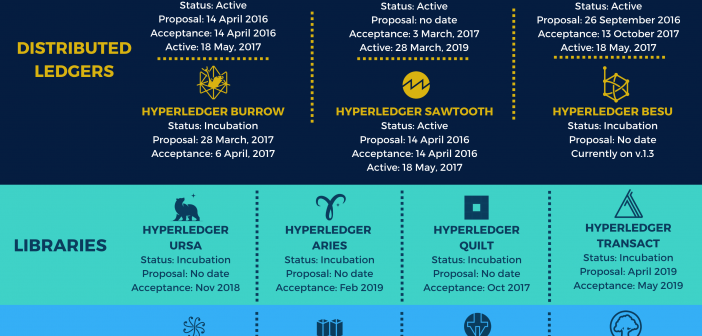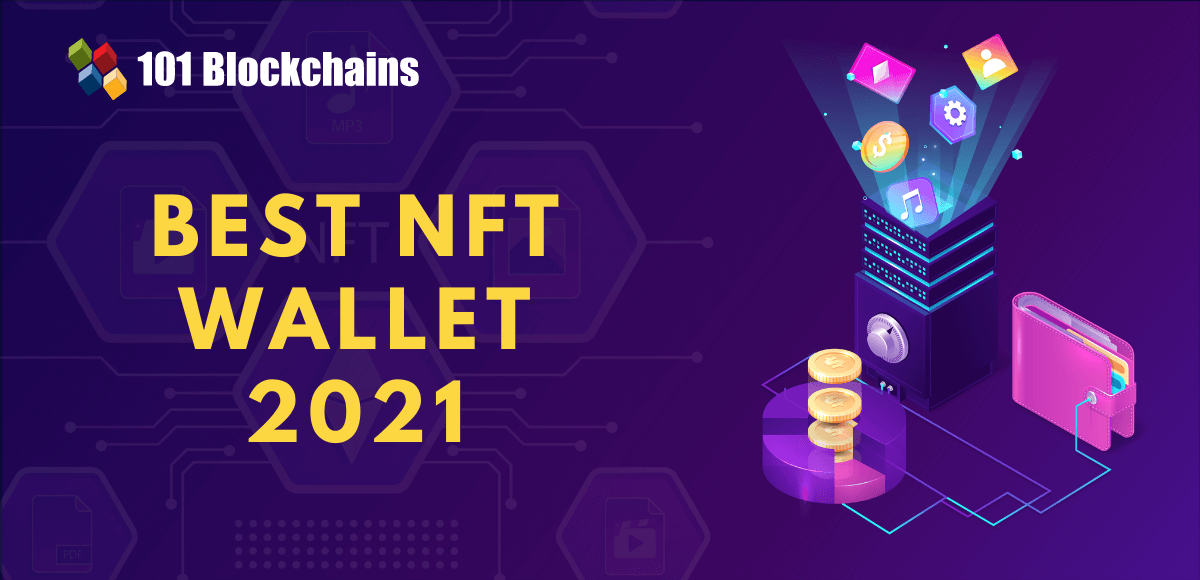Learn how blockchain truly works, master key definitions, and uncover what makes smart contracts so "smart." Dive into the fundamentals, gain valuable insights, and start your blockchain journey today!

- Reviews
101 Blockchains
- on March 04, 2020
Hyperledger History: Everything You Need To Know
Do you want to learn about Hyperledger history? If you do, then you have come to the right place. In this article, we will focus only on Hyperledger history.
Hyperledger has come up a long way from its inception in 2016. In this article, we are going to look at the Hyperledger history and see what the Hyperledger timeline has to offer.
Before we jump into the main topic, let’s get a brief introduction about Hyperledger itself.
Enroll Now: Getting Started with Hyperledger Fabric Course
Hyperledger History: Introduction
Hyperledger is an open-source collaboration to improve blockchain technologies. The Linux Foundation manages it. Over 100 companies are already part of the collaboration, including big companies. It is easy to confuse with blockchain technologies such as Bitcoin. It is all about the technologies that make decentralized ledger a reality.
The core Hyperledger goals include
- Provide business transaction support using enterprise-ready DLT solution using frameworks
- Support technical communities
- Educate the public about blockchain technology and market opportunities
- Provide toolkit for promoting communities
- Community-driven and open infrastructure
We have already covered Hyperledger on 101 Blockchains. Check it out to learn more about it here.
Hyperledger Origin
Hyperledger was first introduced on 9th Feb 2016 in San Francisco, California. It was introduced by The Linux Foundation, which at that time had 30 founding members. Out of those 30 founding members, there were big names, including Guartime, SWIFT, R3, ConsenSys, VMware, Blockchain, IBM, and others. It came into existence with a goal to improve blockchain technology. They also want to make blockchain more accessible to everyone out there.
With an Open Technical Governance Structure, the goal is to create a community that follows standard tools, frameworks, and guidelines when it comes to blockchain implementation. The approach is very effective as it welcomes contributors to do proposals to improve codebase and guidelines.
Now, it has more than 100+ members who are constantly working towards improving the blockchain technology and making it more accessible to everyone else out there.
Digital Asset donates the name Hyperledger to the Linux Foundation for the blockchain technology improvement. This also means that the Hyperledger Project Governing Board can use it, but will always require the Linux Foundation approval before they can use it.
Founding Members and Technical Steering Committee(TSC)
Without the core members, there is no Hyperledger project. It is the members that make it a success. As of Feb 2020, it now has more than 100+ members.
The membership, however, is divided into multiple types. It includes
- Premier members
- General members
- Associate members
- Associates: Academia
To know the whole list, we suggest you visit their member’s page where you can find the entire list: https://www.hyperledger.org/members
However, it is always a good idea to know the premier members. Right now, there are 14 premier members including Accenture, Airbus, American Express, Change Healthcare, Consensys, DTCC, DAIMLER, Fujitsu, Hitachi, IBM, Intel, J.P.Morgan, SAP and NEC.
Brian Behlendorf: Executive Director of Hyperldger
The next biggest event in Hyperledger is the appointment of the executive director of Hyperledger — Brian Behlendorf. He is a well-known entity in the tech world. The appointment took place on May 19th, 2015.
After his appointment, he came forward with a clear strategy on how the project will pan out. He was also upfront and denied that Hyperledger would have its own cryptocurrency. The focus was always on making the technology better.
In September 2016, he wrote a blog post where he described the aim of Hyperledger, including its model. He also discussed how Hyperledger would act as an umbrella project.
Hyperledger History: Hyperledger Projects
To get a better understanding of the Hyperledger history timeline, we need to take a brief look at each one of the projects and the important events in them. Many projects are currently in the incubation period, which means that they are not released. Their core project, Hyperledger, however, has already seen v 2.0 released.
We will also distribute the projects under distributed ledgers, libraries, tools, and domain-specific. Let’s get started with distributed ledgers.
Distributed ledgers
Hyperledger has worked on many distributed ledger projects. Let’s go through each one of them briefly and learn about their history and current roadmap.
Hyperledger Besu
Status: Incubation
Hyperledger Besu is aimed towards building a private and public network for enterprises. Technically, it can run on test networks, including Gorli, Ropsten, and Rinkeby. When it comes to consensus algorithms, it supports IBFT, IBFT2.0, Clique, Etherhash, and PoW. It also offers a comprehensive permissioning scheme.
The roadmap of the Hyperledger Besu is currently set to version 1.3. Right now, they are focusing on the following.
- Focusing on making Beus a first-class client.
- Istanbul support
- Disaster recovery
- State pruning
In the next 1.4 version, they aim to introduce new features such as tracing APIs, Migration tools, enhancing key management and Ethereum 1.x
Currently, the Besu Ethereum Client is passing, and you can download it from their GitHub repository.
Read more about Hyperledger Besu here:
Hyperledger Burrow
Status: Incubation
Hyperledger Burrow is also a distributed ledger project which is currently in the incubation period. It supports WASM based smart contracts along with EVM smart contacts. The purpose of Hyperledger Burrow is to provide a single-binary blockchain distribution providing the user speed, simplicity, and developer ergonomics.
- The proposal was first submitted on 28th March 2017. The Hyperledger Technical Steering Committee now accepts it. It was proposed by Casey Kuhlman, Benjamin Bollen, Silas Davis and Dan Middleton.
- The acceptance was done on 6th April 2017.
The roadmap of Hyperledger Burrow looks interesting. The community actively develops it, and the current focus is to get the CII Badge. You can find all the information about their roadmap, quarterly update, and history on their wiki page.
Hyperledger Fabric
Status: Active
Hyperledger Fabric is undoubtedly one of the biggest distributed ledger projects under the Hyperledger umbrella. It is an enterprise-ready distributed ledger framework aimed to build permissioned applications and solutions.
It aims to be a developing application foundation with a modular architecture. By using the approach, things like membership services, consensus, and other features can be plug-and-play. This approach is beneficial to diverse use cases across the industry.
- The Hyperledger Fabric project proposal was done on 29th March 2016. It was proposed by Tamas Blummer(DAH) and Christopher Ferris(IBM).
- From the proposal, it went into incubation on 31st March 2016.
- The project was first moved out of incubation and set to active on 2nd March 2017.
If you are interested in learning about its roadmap, then check out the JIRA dashboard. Also, check out our review on Hyperledger Fabric 2.0.
Hyperledger Indy
Status: Active
Hyperledger Indy is also an active project under the Hyperledger umbrella. The project’s main aim is to provide reusable components, libraries, and tools for digital identity on distributed ledgers and blockchains. Indy can work with any blockchain solution and also act as a standalone solution to provide a decentralized identity.
- The project was first proposed by Phil Windley, Steve Fulling from Sovrin Foundation, and Jason Law and Nathan George of Evernym.
- TSC approved the proposal on 3rd March 2017.
- After two years in incubation, it is moved to active status on 28th March 2019
Check out the project roadmap here.
Hyperledger IROHA
Status: Active
Hyperledger IROHA is designed for IoT and infrastructure projects that need distributed ledger technology. It is simple and also easy to incorporate. It offers simple construction, domain-drive, C++ design, modular and so on!
- The project is proposed on 26th September 2016 by Makoto Takemiya, Toshiya Cho, Takahiro Inaba, and Mark Smargon.
- The proposal got approved on 13th October 2016
- It was moved from incubation to active on 18th May 2017
Hyperledger Sawtooth
Status: Active
The last distributed ledger project that we are going to list is the Hyperledger Sawtooth. Just like Fabric, it also offers a modular and flexible architecture. It helps businesses to separate the application domain from the core system. Smart contracts can be used to specify application business rules. It supports different consensus algorithms including Proof of Elapsed Time(PoET) and Practical Byzantine Fault Tolerance(PBFT).
- The Sawtooth proposal got submitted by Mic Bowman from Intel Corporation and Richard Gendal Brown from R3cev. It was proposed on 14th, April 2016.
- It got approved on 14th April 2016 by TSC.
- It is then moved from incubation to active status on 18th May 2017.
- Sawtooth PBFT 1.0 got announced on 31st October 2019
- Hyperledger Sawtooth 1.2 got released on 17th October 2019
Libraries
There are many libraries that also fall under the Hyperledger Umbrella. Let’s discuss each one of them briefly with their history.
Hyperledger Aries
Status: Incubation
The library provides a reusable, shared and interoperable tool kit for transmitting, storing and creating verifiable digital credentials. Aries also offers an infrastructure for peer-to-peer credentials and blockchain-rooted.
- The proposal is made by Nathan George.
- It got approved on 5th Feb, 2019 by TSC.
Hyperledger Quilt
Status: Incubation
Hyperledger Quilt is Interledger protocol Java implementation. It helps payments to go across payment networks, including crypto and fiat. It works in a ledger-agnostic manner and helps write application payments logic.
- Takahiro Inaba from NTT Data proposed the Quilt proposal.
- It got approved by TSC in October 2017
- Quilt v1.0 got released in Nov 2019.
Hyperledger Transact
Status: Incubation
The library aims to improve the development effort for developers to write distributed ledger software. It offers a standard interface for managing, writing, and executing smart contracts. The smart contract implementation is different from that of distributed ledger implementation.
- Shawn Amundson makes the transact proposal in April 2019
- It got approved in May 2019 by TSC
Hyperledger Ursa
Status: Incubation
The Hyperledger Ursa enables better use of cryptography in distributed ledger technology by avoiding duplicate work related to cryptography. It is a shared library that improves security.
- The Ursa proposal was proposed by plenty of people
- It got approved in Nov 2018.
Tools
In the last section, we are going to discuss Hyperledger tools.
Hyperledger Avalon
Status: Incubation
The tool helps enterprises to move their off-chain blockchain processing to dedicated computing resources. It helps developers mitigate drawbacks and use the computation trust to their benefit. It is ledger independent and published by Enterprise Ethereum Alliance.
- Its incubation status was offered in June 2018 as Hyperledger Trusted Computer Framework
- It got renamed to Hyperledger Avalon in October 2018
Hyperledger Caliper
Status: Incubation
Hyperledger Caliper lets developers and users check blockchain implementation performance using pre-defined use cases set. It is a blockchain benchmark tool.
- It is proposed by Victor HU and Haojun ZHOU, Huawei
- It got approved in March 2018 by TSC
Hyperledger Cello
Status: Incubation
Hyperledger Cello offers developers the ability to deploy blockchain more seamlessly. It utilizes an on-demand “as-a-service model. It can be termed as a blockchain operating system.
- It got approved and proposed in Jan 2017
Hyperledger Explorer
Status: Incubation
Lastly, we have Hyperledger Explorer, which offers a way to deploy, invoke, view or query block, associated data, transactions, transaction families, chain codes, and more!
- It got proposed by Dan Middleton(Intel), Christopher Ferris(IBM), and Pardha Vishnumolakala(DTCC)
- It got approved in Aug 2016 by TSC.
Proposals and Updates
Many proposals are made between 2018 and 2019. Below, you can check the page and learn more about them.
Hyperledger also maintains its TSC project updates. You can check all the updates here.
Conclusion
This leads us to the end of Hyperledger history. Do you think that we covered everything related to Hyperledger history? If we did, then do not forget to comment below and let us know!





